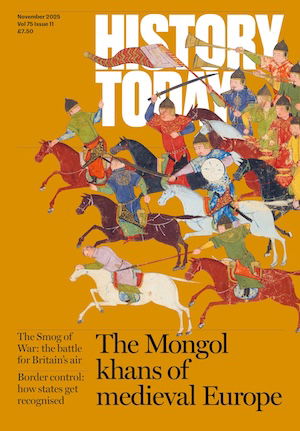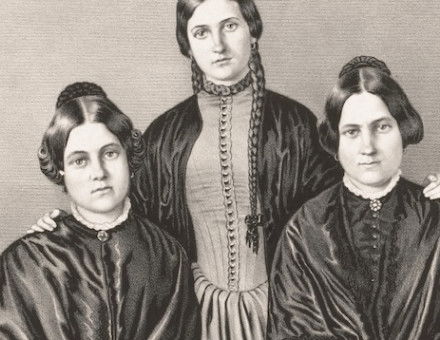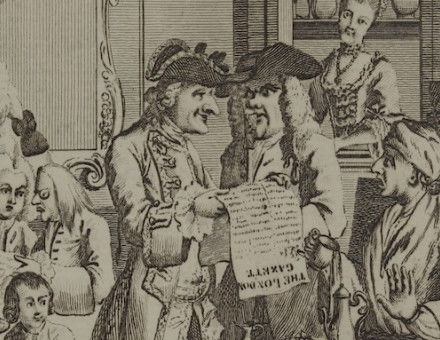Slaying Myths: England and St George
St George only gained popularity in England in the 15th century, and Richard the Lionheart had nothing to do with his adoption as the nation’s patron saint.

As is widely appreciated, St George owes much of his popularity in England to the enthusiasm of Edward III (1312-77). In 1348, when the king established the Order of the Garter, his super-select chivalric club, he picked George as its special patron, at the same time designating his birthplace, Windsor Castle, as the order's spiritual headquarters and rededicating the chapel there (formerly devoted to St Edward) in the saint's honour. Just three years later the king was pleased to refer to St George in his letters as 'the most invincible athlete of Christ, whose name and protection the English nation invoke as that of their patron, especially in war'.
This was, it seems, an exaggeration. Recent historical writing, while still giving Edward III full credit for establishing George's cult at court, has questioned the saint's popularity with the English people as a whole. George may have been beloved of Edward and his knights, but it was not until the 15th century, in the wake of the victories of Henry V (1387-1422), that his cult really began to assume national status. Moreover, while it is clear that Edward was devoted to St George from an early age, it is also apparent that interest in the saint's cult had been intensifying in royal and aristocratic circles for some time before the king's accession.
The cult of St George, which originated in the eastern Mediterranean in the fourth century, transferred to England in two phases. St George was known to the Anglo-Saxons, but only in his original manifestation as an early Christian martyr. To judge from the minimal number of references to him, he was never popular in this guise and some authorities, such as Bede, clearly considered him to be a dubious addition to the saintly canon. By the time of the Norman Conquest, however, George had been reinvented as a Byzantine soldier-saint and his new-found military prowess made him irresistibly popular with the knights of western Christendom, many of whom went east themselves in the course of the First Crusade (1095-99). A quantum leap for George's popularity in the West was his reported apparition in aid of these crusaders during their successful siege of Antioch in 1098; soon after we find some of the earliest images of St George as a knight on tombs and church doorways in England.
When did he move from the margins to the mainstream? One thing is now certain - the shift had nothing to do with Richard the Lionheart (1157-99). Until recently, any book on the subject of St George would assert that his first flush of popularity in England, if not his introduction to these shores, was due to the devotion of the famous crusader king. Richard, it was reported, had beheld a vision of George during the siege of Acre (1189-91), rebuilt a church in his honour at Lydda (Lod in modern Israel) and, most significantly, had adopted the saint's emblem - the red cross on a white ground - as England's arms. This tradition, however, was completely discredited 15 years ago by Oliver de Laborderie, who showed Richard's connection with St George to be spurious, a legend invented for political purposes at the Tudor court and accepted and embellished thereafter. Contemporary sources for Richard's reign mention neither visions nor church-building and inform us that the king and his crusaders wore white crosses, not red ones. Apart from the incidental fact that he was married in a church dedicated to St George, Richard has no demonstrable connection with him at all.
As far as can be determined, the earliest interest in St George in royal and aristocratic circles in England was expressed in the middle decades of the 13th century, two generations after Richard's death. In 1245, for example, Henry III (1207-72) paid a certain Henry the Versemaker for writing an account of George's life and a decade later he ordered an image of the saint to be installed over the entrance to the hall at Winchester Castle. Similarly, at some point before his death in 1251, Paulin Piper, one of the king's closest courtiers, composed some lines of poetry in George's honour; while in 1251 itself, William de Cantilupe, a baron with strong court connections, decided to call his first- born son George - the earliest person mentioned in the Dictionary of National Biography (DNB) to bear that name.
Possibly this early English interest in St George had some- thing to do with crusading - Henry III, Piper and Cantilupe had all taken the cross. At the same time, none of them actually went on crusade; their interest in George is equally likely to have been stirred by the growing enthusiasm that his cult was attracting elsewhere in Europe. In England that enthusiasm remained muted. These are the only two references to connect Henry III with George in a 56-year reign, compared with the thousands that link the king to his favourite saint, Edward the Confessor, in whose honour he rebuilt Westminster Abbey. Likewise, young George de Cantilupe may have been the first of that name, but of the 1,550 entries in the DNB for the 13th century, he is the only George.
If there was significant interest in St George at Henry's court, it is unlikely to have been driven by the king, whose model was the peaceable and pious Confessor, but by the more martial members of his family circle. Henry's queen, Eleanor of Provence, was passionate about the cult of chivalry and a romance work written for her after Henry's death contains a reference to St George.
More likely still to have been an advocate for St George was Henry's son and heir Edward I (1239-1307). Edward and his contemporaries hungered for glory on the tournament field and yearned to go on crusade, so George would have been an ideal patron. It is therefore significant that, when Henry's reign collapsed into civil war, they rode into battle against Simon de Montfort, at Evesham in 1265, wearing red crosses on a white ground - the earliest recorded use of the saint's device in England.
Unequivocal evidence of Edward's identification with St George, and the biggest advance for his standing in England before the founding of the Garter, came in the course of the English conquest of Wales. In both his campaigns against the Welsh (1276-77 and 1282-83) Edward led armies that marched behind St George's banner and his infantry were issued with St George's cross armbands, now explicitly described as such in royal financial accounts. The association of George with the conquest was further underlined on the king's return to England in 1285, when he gave thanks for his victory by presenting four gold figures at the altar of Canterbury Cathedral: St Edward and St John, the favourites of his father, were now joined by St George and his horse.
Edward I was not as singularly devoted to St George as his grandson, Edward III. Indeed, when it came to the heavenly host, he preferred to recruit as widely as possible. In later campaigns against the Scots his troops still carried George's banner, but they also bore the arms of St Edward, St Edmund, St Cuthbert and St John of Beverley. Edward regularly gave alms on St George's Day (April 23rd), but he did the same for scores of other saints. Tellingly, in the inventory of royal relics taken after the king's death in 1307, George gets no mention.
In this respect, therefore, the prominence given to St George during the conquest of Wales seems precocious and one wonders what lay behind it. Edward, unlike his father, had been on crusade (1270-72) so it was unsurprising that his struggle against the Welsh should assume the aspect of a holy war. More tentatively, one wonders, given the long- standing association of the Celtic peoples with the image of the dragon, whether George was invoked because of his special skills in the slaying depart- ment. Certainly the dragon legend, which had formed no part of George's earliest lives, was known in England by this date. Whatever the case, Edward Is decision to invoke St George as his patron during the conquest of Wales was a seemingly unique experiment and George had to wait another two generations before his pre-eminent status was assured.
Would he have had to wait so long, however, had events in 1284 taken a slightly different turn? After his conquest of Wales, Edward returned to Snowdonia for a series of victory celebrations and on April 25th his queen, Eleanor of Castile, gave birth at Caernarfon Castle to a son who would eventually become his father's successor. But would Edward II have borne that name had he arrived just 48 hours earlier, on St George's Day? Might the 14th century, rather than the 18th century, have seen our first King George?
Marc Morris is a historian and broadcaster. He studied and taught history at the universities of London and Oxford. His most recent book is A Great and Terrible King: Edward I and the Forging of Britain (Hutchinson)






